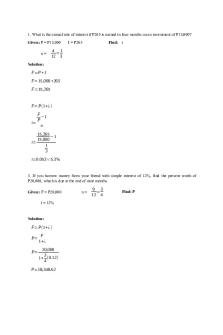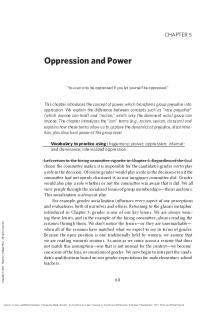Table of control chart constants will be helpful to everyone really PDF

| Title | Table of control chart constants will be helpful to everyone really |
|---|---|
| Author | kripa patel |
| Course | Total Quality Management |
| Institution | University of Delhi |
| Pages | 1 |
| File Size | 83.1 KB |
| File Type | |
| Total Downloads | 98 |
| Total Views | 140 |
Summary
helpful docs download it fast . happy to help you all....
Description
Table of Control Chart Constants X-bar Chart Constants Sample Size = m 2 3 4 5 6 7 8 9 10 11 12 13 14 15 16 17 18 19 20 21 22 23 24 25
for sigma estimate
R Chart Constants
S Chart Constants
A2
A3
d2
D3
D4
B3
B4
1.880 1.023 0.729 0.577 0.483 0.419 0.373 0.337 0.308 0.285 0.266 0.249 0.235 0.223 0.212 0.203 0.194 0.187 0.180 0.173 0.167 0.162 0.157 0.153
2.659 1.954 1.628 1.427 1.287 1.182 1.099 1.032 0.975 0.927 0.886 0.850 0.817 0.789 0.763 0.739 0.718 0.698 0.680 0.663 0.647 0.633 0.619 0.606
1.128 1.693 2.059 2.326 2.534 2.704 2.847 2.970 3.078 3.173 3.258 3.336 3.407 3.472 3.532 3.588 3.640 3.689 3.735 3.778 3.819 3.858 3.895 3.931
0 0 0 0 0 0.076 0.136 0.184 0.223 0.256 0.283 0.307 0.328 0.347 0.363 0.378 0.391 0.403 0.415 0.425 0.434 0.443 0.451 0.459
3.267 2.574 2.282 2.114 2.004 1.924 1.864 1.816 1.777 1.744 1.717 1.693 1.672 1.653 1.637 1.622 1.608 1.597 1.585 1.575 1.566 1.557 1.548 1.541
0 0 0 0 0.030 0.118 0.185 0.239 0.284 0.321 0.354 0.382 0.406 0.428 0.448 0.466 0.482 0.497 0.510 0.523 0.534 0.545 0.555 0.565
3.267 2.568 2.266 2.089 1.970 1.882 1.815 1.761 1.716 1.679 1.646 1.618 1.594 1.572 1.552 1.534 1.518 1.503 1.490 1.477 1.466 1.455 1.445 1.435
Control chart constants for X-bar, R, S, Individuals (called "X" or "I" charts), and MR (Moving Range) Charts. NOTES: To construct the "X" and "MR" charts (these are companions) we compute the Moving Ranges as: R2 = range of 1st and 2nd observations, R3 = range of 2nd and 3rd observations, R4 = range of 3rd and 4th observations, etc. with the "average" moving range or "MR-bar" being the average of these ranges with the "sample size" for each of these ranges being n = 2 since each is based on consecutive observations ... this should provide an estimated standard deviation (needed for the "I" chart) of σ = (MR-bar)/d2 where the value of d 2 is based on, as just stated, m = 2. Similarly, the UCL and LCL for the MR chart will be: UCL = D4(MR-bar)
and
LCL = D3(MR-bar)
but, since D3 = 0 when n = 0 (or, more accurately, is "not applicable") there will be no LCL for the MR chart, just a UCL....
Similar Free PDFs

41723052 - This will really help!
- 24 Pages

Z-table - Z chart
- 1 Pages

To be - There be
- 4 Pages

Attribute Control chart ppt
- 41 Pages

Exercise Pivot Table with Chart
- 6 Pages

SQ9MATH144 helpful to you
- 1 Pages

WILL AND Going TO
- 4 Pages

Boys will be boys VIP Card
- 4 Pages
Popular Institutions
- Tinajero National High School - Annex
- Politeknik Caltex Riau
- Yokohama City University
- SGT University
- University of Al-Qadisiyah
- Divine Word College of Vigan
- Techniek College Rotterdam
- Universidade de Santiago
- Universiti Teknologi MARA Cawangan Johor Kampus Pasir Gudang
- Poltekkes Kemenkes Yogyakarta
- Baguio City National High School
- Colegio san marcos
- preparatoria uno
- Centro de Bachillerato Tecnológico Industrial y de Servicios No. 107
- Dalian Maritime University
- Quang Trung Secondary School
- Colegio Tecnológico en Informática
- Corporación Regional de Educación Superior
- Grupo CEDVA
- Dar Al Uloom University
- Centro de Estudios Preuniversitarios de la Universidad Nacional de Ingeniería
- 上智大学
- Aakash International School, Nuna Majara
- San Felipe Neri Catholic School
- Kang Chiao International School - New Taipei City
- Misamis Occidental National High School
- Institución Educativa Escuela Normal Juan Ladrilleros
- Kolehiyo ng Pantukan
- Batanes State College
- Instituto Continental
- Sekolah Menengah Kejuruan Kesehatan Kaltara (Tarakan)
- Colegio de La Inmaculada Concepcion - Cebu







